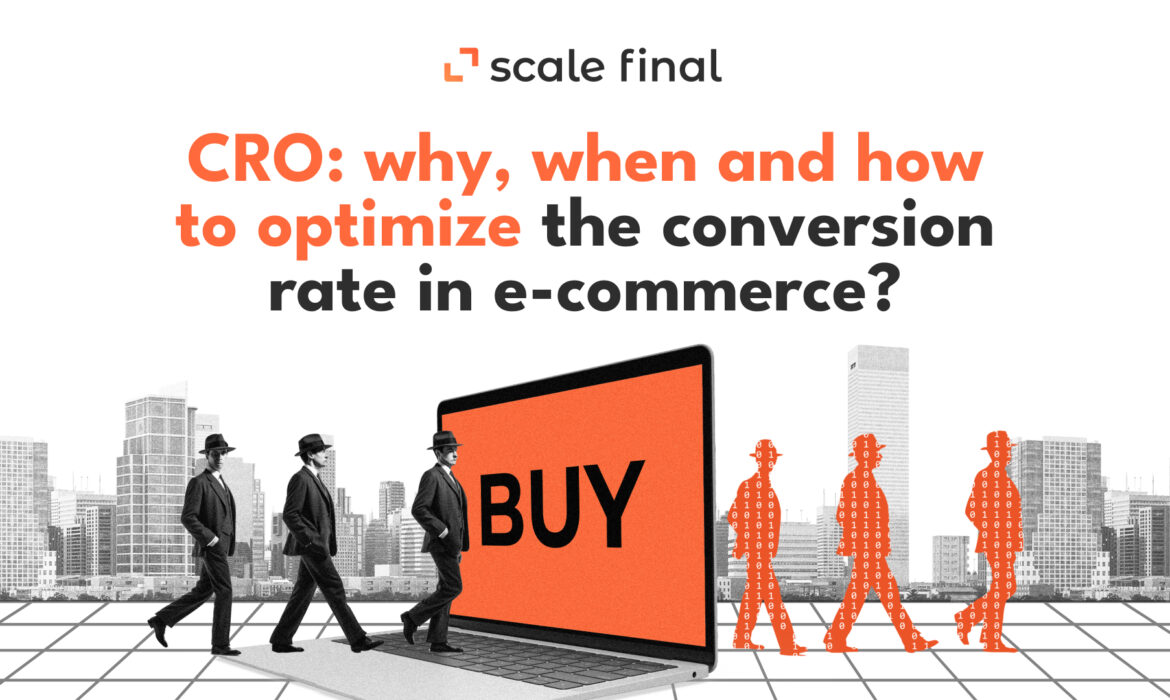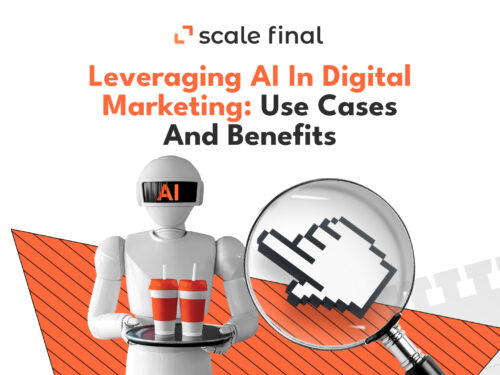Home • Blog • CRO: why, when and how to optimize the conversion rate in e-commerce?
CRO: why, when and how to optimize the conversion rate in e-commerce?
CRO (Conversion Rate Optimization) refers to activities aimed at increasing the percentage of users who complete a particular action (e.g., an order on a website).
In the early 2000s, after the dot-com bubble burst in 2001, marketers recognised the need for CRO. The massive collapse of Internet startups showed that investment and advertising weren’t enough to make an online business a success. Building a user journey is essential so that as many visitors as possible become customers.
Today, CRO is one of the most significant growth areas in e-commerce. Because through conversion optimization, you can increase your sales without increasing your advertising budget.
Is conversion optimization always applicable, and how can you determine if CRO works for your business? Let’s take a closer look at it.
When should I use CRO?

CRO is a universal tool suitable for most industries and types of online businesses. Still, there are situations when you can see the biggest impact of CR optimization. We’ll talk about them below.
1. Optimization of the top of the funnel doesn’t bring results
We’ve compiled a checklist of 5 questions to help you realize that you might need CRO.
So, your website/app:
- Is displayed correctly on all devices and in all browsers
- Is normally indexed by search engines
- All important keywords relevant to your product have been added
- All advertising campaigns have relevant and effective landing pages
- All ads are optimized and working at full potential
If you answered “yes” to most of the questions, but still aren’t getting the business results, pay attention to your customer journey.
2. CR of your website/app is below market benchmarks

By comparing CR on different devices with the corresponding industry average, you can assess whether your funnel is running well now or whether it’s better to optimize it.
You can track the current benchmarks and their dynamics by month via DynamicField
3. You have enough traffic to conduct A/B tests
One of the most essential tools for testing hypotheses in CRO is to conduct A/B, A/B/C, and A/B/n tests. If by the end of the test, there is a statistically significant increase in conversions in the test group compared to the control group, the hypothesis is considered confirmed.
Note: A strong hypothesis is crucial for statistically significant results and a sufficient sample size for the test.
Learn more about classic a/b testing: CRO from scratch. Part 2.
And multi-armed bandit testing: Multi-armed bandit vs A/B test: choose your fighter
How to increase conversion rates in e-commerce with CRO?

CRO isn’t a chaotic but a systematic process with several repetitive steps.
Step 1: Search for insights
In this phase, you analyze the user journey on the website or app using analytics and look for funnel bottlenecks. The deeper you go into this phase, the more meaningful hypotheses can be derived from it.
Funnel bottleneck is the term used to describe the phase in the customer journey where potential customers bounce at a high rate, which reduces the conversion rate.
Tip: We recommend custom reports, analyzing user behaviour of different segments, and looking for patterns in successful and unsuccessful interaction scenarios with your website.
Step 2: Creation of hypotheses
Create hypotheses based on the patterns you found in Step 1. Example: You found that the conversion rate of a segment that uses search during a session is 50% higher than that of a segment that doesn’t.
Hypothesis: If you fix the search bar while scrolling the page, you’ll increase the conversion of users to customers because you make the search function more visible.
Step 3: Development of the test design
You are getting ready to test hypotheses. Steps:
- prepare the visual component of the experiment;
- select the key metric and proxy metrics;
- calculate the sample size and duration of the test;
- involve the development team if necessary;
- test all variants before launching the campaign.
Attention to detail is most important at this stage. You don’t want to waste time with invalid test results you can’t interpret.
A proxy metric is an indirect metric that affects a key metric.
Step 4: Test
You run the test with the users, monitor the correctness of the data collection, and draw conclusions until the end of the test. It’s necessary to achieve statistical significance.
There are AI testing solutions you might want to try: Conversion intelligence: AI for CRO
Step 5: Scaling
After completing the test, you analyze the data obtained and decide whether to scale, stop or optimize.
Note: The same hypothesis can bring a statistically significant increase in conversions for one segment, a decrease for another, and no effect for the third segment.
Therefore, in the decision phase, you should look at the results for all important segments and analyze the impact of the tested changes on other business metrics.
What is HADI for CRO?

HADI is an abbreviation for the four steps of any hypothesis testing:
Hypothesis (H): Formulation of an educated guess or prediction about a possible change that could improve conversion rates.
Action (A): Taking the necessary steps or implementing changes to test the hypothesis. This may include changes to the website’s design, content, or functionality.
Data (D): Collecting and analyzing the test data using analytics tools to determine the impact of your changes on conversion rates or other key metrics.
Insight (I): Concluding the data and gaining insights that you can use for future CRO strategies. This may mean identifying successful changes that you can apply more broadly or identifying areas where further testing is needed.
Tip: We recommend starting and ending the testing cycle at the letter “I” (Insights). The insights gained before and after the implemented changes allow you to interact more effectively with users and lead them more seamlessly to conversion.
When combined with other strategies, such as user experience research and data analysis, the HADI model can effectively increase e-commerce conversion rates.
Ready to optimize your conversion rates?
At ScaleFinal, every business is unique and requires a personalized approach. If you’re just starting your CRO journey or find that your current strategy isn’t delivering the results, our AI-powered CRO audit is the perfect starting point.
AI eye-tracking technology allows us to identify potential bottlenecks and opportunities in your conversion funnel and provide valuable insights to improve your website’s performance.
Don’t leave your growth to chance. Let ScaleFinal guide your path to higher conversion rates. Start your CRO journey with us today.
Author
-
 Product Manager
Product ManagerI'm equal parts strategic thinker and creative doer, with over 6 years of experience in digital marketing. I started out as a creative copywriter, and now I'm all in product management. Fun, inspiring and slightly caffeinated.
View all posts






